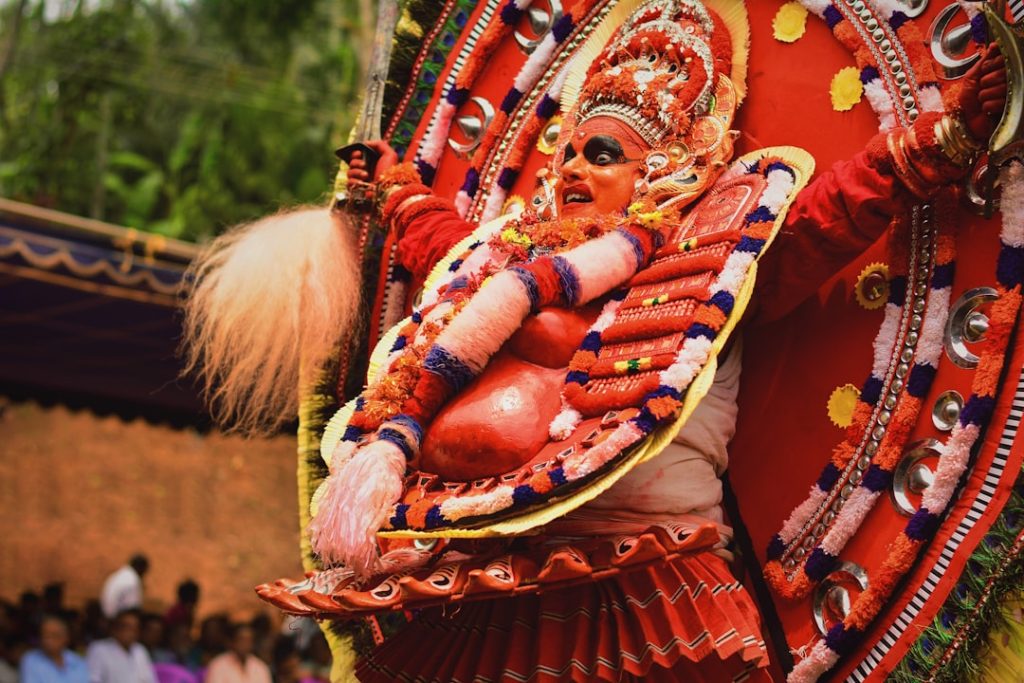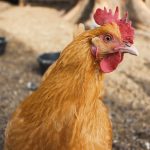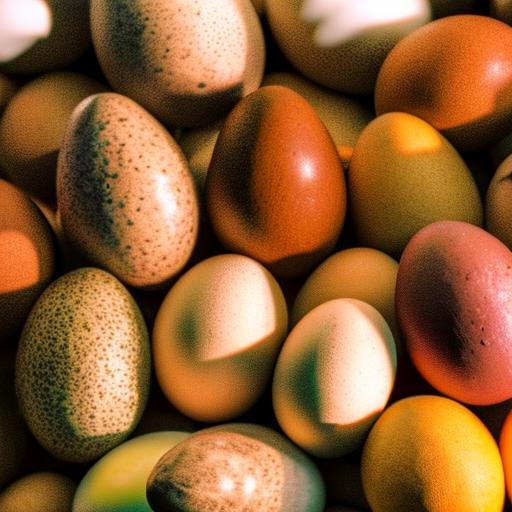Germany is home to numerous chicken breeds developed over centuries for specific traits and purposes. These breeds are known for their hardiness, productivity, and adaptability to various climates, making them popular among small-scale backyard farmers and commercial poultry operations. German chicken breeds have significantly contributed to the country’s agricultural history and continue to support sustainable farming practices.
Examples range from the well-known Black Forest chicken to the rare Sulmtaler breed, offering diverse options for poultry enthusiasts and farmers. German chicken breeds are adaptable to various environments, thriving in both free-range and confined farming systems. Their versatility across different climates and conditions makes them suitable for meat production, egg-laying, and exhibition purposes.
These breeds also contribute to genetic diversity in poultry populations, enhancing the resilience and sustainability of chicken farming in Germany and internationally. The unique characteristics and rich history of German chicken breeds underscore their ongoing importance in modern agriculture.
Table of Contents
- 1 Characteristics and Physical Appearance of German Chicken Breeds
- 2 Popular German Chicken Breeds
- 3 Historical Significance of German Chicken Breeds
- 4 The Role of German Chicken Breeds in Sustainable Farming
- 5 Breeding and Rearing German Chicken Breeds
- 6 Challenges and Opportunities for German Chicken Breeders
- 7 FAQs
- 7.1 What are some popular German breeds of chickens?
- 7.2 What are the characteristics of German chicken breeds?
- 7.3 Are German chicken breeds suitable for backyard poultry keeping?
- 7.4 What are some unique traits of German chicken breeds?
- 7.5 Are German chicken breeds recognized by poultry associations?
Key Takeaways
- German chicken breeds have a rich history and are known for their unique characteristics and physical appearance.
- Some popular German chicken breeds include the Hamburg, the Orpington, and the Brahma, each with their own distinct traits.
- German chicken breeds have played a significant role in sustainable farming practices, contributing to the preservation of genetic diversity and the promotion of local food systems.
- Breeding and rearing German chicken breeds require careful attention to genetic traits, health, and welfare to maintain the breed’s integrity and productivity.
- While German chicken breeders face challenges such as market competition and regulatory requirements, there are also opportunities for niche markets and sustainable agriculture initiatives.
Characteristics and Physical Appearance of German Chicken Breeds
Practical Attributes and Versatility
Many German chicken breeds are prized for their dual-purpose capabilities, meaning they are valued for both meat and egg production. This versatility has made them popular choices for small-scale farmers and homesteaders looking to maximize the benefits of raising chickens.
Aesthetic Diversity
In addition to their practical attributes, German chicken breeds also exhibit a wide range of colors, patterns, and feather types, making them visually appealing additions to any flock. The striking plumage of the Sulmtaler, the distinctive rose comb of the Thuringian, and the elegant lacing of the Lakenfelder are just a few examples of the aesthetic diversity found among German chicken breeds.
Value to the Poultry Industry
Whether raised for their utility or their beauty, these breeds offer something for every poultry enthusiast. The physical diversity and unique characteristics of German chicken breeds make them valuable assets to the poultry industry and contribute to the overall richness of poultry farming.
Popular German Chicken Breeds

Several German chicken breeds have gained international recognition for their exceptional qualities and have become popular choices for poultry enthusiasts around the world. The Hamburg chicken, with its distinctive spangled plumage and elegant appearance, is prized for its prolific egg-laying abilities and has become a favorite among backyard chicken keepers. The Orpington, although originally developed in England, has been widely embraced in Germany for its gentle nature, cold-hardiness, and excellent meat production.
The Sulmtaler, with its striking mahogany plumage and dual-purpose capabilities, has also garnered attention from poultry enthusiasts seeking a unique and valuable addition to their flocks. The Vorwerk chicken, known for its striking black and gold plumage and robust build, has gained popularity for its hardiness and adaptability to various farming systems. The Lakenfelder, with its distinctive laced feathers and excellent egg-laying abilities, has become a sought-after breed for both small-scale and commercial egg production.
These popular German chicken breeds showcase the diversity and versatility of poultry farming in Germany and continue to be valued for their contributions to sustainable agriculture. Whether raised for eggs, meat, or exhibition purposes, these breeds offer a wide range of options for poultry enthusiasts seeking quality birds with unique characteristics.
Historical Significance of German Chicken Breeds
German chicken breeds have a rich historical significance that reflects the country’s agricultural heritage and the importance of poultry farming in traditional rural communities. Many of these breeds have been developed over centuries through careful selection and breeding practices, resulting in birds that are well-adapted to local environments and farming traditions. The historical significance of German chicken breeds is evident in their names, which often reflect their regional origins or the breeders who played a key role in their development.
The Black Forest chicken, for example, is named after the region in southwestern Germany where it was originally bred, while the Thuringian chicken takes its name from the Thuringia region in central Germany. These regional connections highlight the close relationship between German chicken breeds and the cultural landscapes in which they were developed. The historical significance of these breeds is also evident in their roles as symbols of local pride and agricultural heritage, with many breeders working diligently to preserve and promote these valuable genetic resources.
As we explore the historical significance of German chicken breeds, it becomes clear that these birds are not only important for their practical contributions to agriculture but also for their cultural and historical significance within rural communities.
The Role of German Chicken Breeds in Sustainable Farming
German chicken breeds play a crucial role in sustainable farming practices by offering valuable genetic diversity, adaptability to local environments, and resilience to changing agricultural conditions. These breeds have been carefully developed over generations to thrive in diverse climates and farming systems, making them well-suited for sustainable agriculture. Their ability to forage for food, resist common poultry diseases, and adapt to varying environmental conditions makes them valuable assets for farmers seeking to minimize their reliance on external inputs and maximize the efficiency of their farming operations.
In addition to their practical attributes, German chicken breeds also contribute to sustainable farming by promoting biodiversity within agricultural landscapes. By raising and preserving these unique breeds, farmers help maintain genetic diversity within poultry populations, ensuring the long-term resilience of chicken farming in Germany and beyond. Furthermore, many German chicken breeds are well-suited for free-range and organic farming systems, allowing farmers to produce high-quality meat and eggs while minimizing their environmental impact.
The role of German chicken breeds in sustainable farming extends beyond their practical contributions to agriculture; these birds also serve as ambassadors for traditional farming practices and cultural heritage, promoting a deeper connection between consumers and the food they eat.
Breeding and Rearing German Chicken Breeds

Preserving Genetic Diversity and Breed Standards
Breeding German chicken breeds demands a focus on genetic diversity, breed standards, and the specific needs of each breed. Many breeders work tirelessly to preserve the unique characteristics of these birds while also striving to improve traits such as egg production, meat quality, or disease resistance.
Providing Optimal Care and Housing
Rearing German chicken breeds involves providing appropriate housing, nutrition, and healthcare to ensure the health and well-being of the birds. Many breeders prioritize natural rearing methods that allow chickens to exhibit their natural behaviors, such as scratching for food, dust bathing, and roosting. By providing a stimulating environment that meets the birds’ physical and behavioral needs, breeders can raise healthy and resilient chickens that are well-suited for various farming systems.
Effective Record-Keeping and Pedigree Management
Proper record-keeping and pedigree management are essential aspects of breeding German chicken breeds, allowing breeders to track genetic lines, monitor breeding outcomes, and make informed decisions about future breeding strategies.
Challenges and Opportunities for German Chicken Breeders
While German chicken breeds offer numerous benefits for sustainable agriculture, breeders also face challenges in preserving these valuable genetic resources. Maintaining breed purity, managing genetic diversity, and finding suitable markets for rare or niche breeds can be daunting tasks for breeders seeking to promote these unique birds. Additionally, changing consumer preferences and agricultural practices may pose challenges for breeders looking to raise traditional German chicken breeds in a modern farming landscape.
Despite these challenges, there are also opportunities for German chicken breeders to promote their valuable birds and contribute to sustainable agriculture. By educating consumers about the unique qualities of these breeds and highlighting their contributions to genetic diversity and cultural heritage, breeders can raise awareness about the importance of preserving traditional poultry breeds. Furthermore, collaborations with conservation organizations, agricultural institutions, and fellow breeders can provide valuable support and resources for breeders seeking to promote and preserve German chicken breeds.
In conclusion, German chicken breeds offer a diverse range of options for poultry enthusiasts and farmers seeking quality birds with unique characteristics. These breeds have a rich historical significance that reflects the country’s agricultural heritage and continue to play a vital role in modern agriculture. Their adaptability to different climates and conditions makes them valuable contributors to genetic diversity in poultry populations, ensuring the resilience and sustainability of chicken farming in Germany and beyond.
While breeders face challenges in preserving these valuable genetic resources, there are also opportunities to promote these unique birds and contribute to sustainable agriculture through education, collaboration, and advocacy efforts. As we continue to appreciate the beauty and utility of German chicken breeds, it is important to recognize their cultural significance and value within rural communities around the world.
If you’re interested in learning more about German breeds of chickens, you might also want to check out this article on how to care for goslings. It provides valuable information on raising and caring for young geese, which can be helpful for anyone looking to expand their poultry knowledge beyond just chickens.
FAQs
What are some popular German breeds of chickens?
Some popular German breeds of chickens include the Hamburg, the Orpington, the Brahma, and the Langshan.
What are the characteristics of German chicken breeds?
German chicken breeds are known for their hardiness, good egg-laying abilities, and attractive appearances. They are often dual-purpose breeds, meaning they are suitable for both egg production and meat.
Are German chicken breeds suitable for backyard poultry keeping?
Yes, many German chicken breeds are well-suited for backyard poultry keeping due to their friendly dispositions, adaptability to various climates, and good egg-laying capabilities.
What are some unique traits of German chicken breeds?
Some unique traits of German chicken breeds include their distinctive plumage patterns, such as the laced feathers of the Hamburg breed, and their large size, as seen in breeds like the Brahma.
Are German chicken breeds recognized by poultry associations?
Yes, many German chicken breeds are recognized by poultry associations around the world, including the American Poultry Association and the Poultry Club of Great Britain.
Meet Walter, the feathered-friend fanatic of Florida! Nestled in the sunshine state, Walter struts through life with his feathered companions, clucking his way to happiness. With a coop that’s fancier than a five-star hotel, he’s the Don Juan of the chicken world. When he’s not teaching his hens to do the cha-cha, you’ll find him in a heated debate with his prized rooster, Sir Clucks-a-Lot. Walter’s poultry passion is no yolk; he’s the sunny-side-up guy you never knew you needed in your flock of friends!







